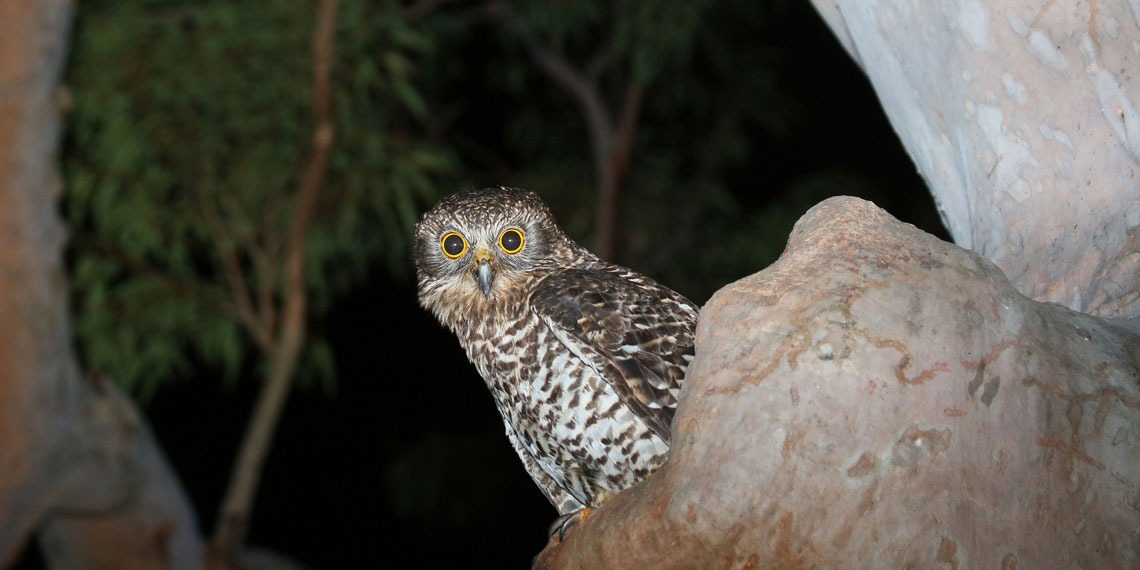Powerful owl

Did you know?
You can distinguish the male and female call by the tone of their hoot! Males have a slow, deep, resonant double hoot, while females have a higher pitch and upward inflection on the second note.
Appearance
Australia’s largest owl species with an impressive wingspan of up to 140 cm. It has a relatively small head with large yellow eyes. The underparts of the owl are whitish, with distinctive dark greyish-brown V-shaped markings. Their call may be heard any time of the year, but is more vocal during autumn breeding season.
Distribution and habitat
Endemic to eastern and south-eastern Australia, it occurs in low densities throughout eastern forests from the coast inland to tablelands. It requires large tracts of forest or woodland habitat but can occur in fragmented landscapes as well. Hollow-bearing trees are a critical habitat, not only for nesting but for foraging.
Diet
The preferred prey are medium-sized marsupials such as the Common Ringtail Possum and at higher elevations, the Greater Glider. There appears to be regional differences, with Flying-foxes being popular in some areas, as well as birds, depending on the availability of mammals.
Breeding
It can only nest in large tree hollows of eucalypts over 150 years old. Nesting occurs from late autumn to mid-winter, with clutches consisting of two eggs. While the female and young are in the nest, the male roosts nearby guarding them. Pairs demonstrate high site fidelity to a large territory.
Conservation status
Listed as Vulnerable under the NSW Biodiversity Conservation Act 2016. Threats include fragmentation of forest and woodland habitat from land clearing, and removal of old growth hollow-bearing trees.
Feather identification - be a citizen scientist!
A feather found on the ground can direct important conservation efforts! It helps us pinpoint locations important to birds, inform us of movement patterns and can be used for genetic testing.
The Powerful Owl Project have created a unique Feather ID Guide to help you determine if you have found a Powerful Owl feather. They have also included images of other species who's feathers look similar. If you find a feather send an email with a photo and date and location.
Download a copy of the guide(PDF, 8MB)
This project was supported by an Environmental Levy Grant in 2021. Project delivered by Dr Holly Parsons and the team at The Powerful Owl Project Birdlife Australia.
Powerful Owl Project Australia
Delivered through Birdlife Australia, the Powerful Owl Project aims to inspire and educate the public about owls and their habitats. Get involved through helping to track our owls in your neck of the woods. Have you seen or heard a Powerful Owl? Report your sightings on Birdata. It is free to use just download the free app on your phone.
*Image courtesy Chris Charles.